The hair-raising adventures of David Stirling, the madman behind the SAS
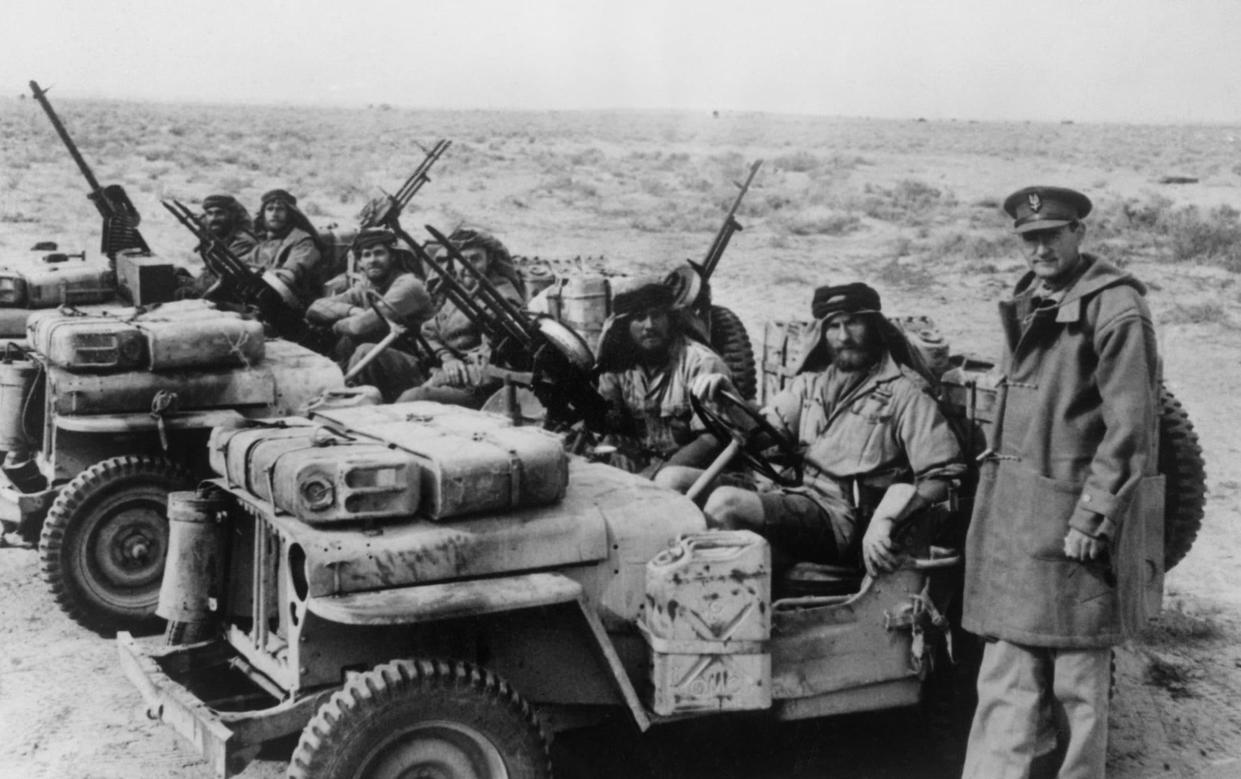
Lieutenant-Colonel David Stirling was “quite, quite mad”. At least, that was the assessment of Field Marshal Bernard Montgomery. Indeed, while bored in Cairo during the Second World War, Stirling had jumped out of an aeroplane without proper training (or a helmet), tore his parachute on the tail, and hit the ground at such speed he was temporarily blinded and paralysed. Soon after, still on crutches, he sneaked into British Middle East HQ (“I had to use my crutches as a kind of ladder to get over the wire when the guards weren't looking,” Stirling recalled). This one-man mission was carried out for good reason: to evade not only the guards, but also the British army’s bloated administration, and put a proposal directly into the hands of the generals – the proposal that ultimately founded the SAS.
Stirling became commander of the original SAS, which carried out sabotage missions that destroyed scores of enemy aircraft, as well as fuel tankers, trucks, communications, and anything else to support larger operations in North Africa and disrupt enemy supply lines.
The legend of Stirling’s SAS is the stuff of swashbuckling adventure – daring, not-for-the-faint-hearted raids achieved with swagger, bravado, and straight-up blagging their way through enemy checkpoints. British tabloids would give Stirling the nickname “the Phantom Major”. Captured in January 1943, Stirling spent the remainder of the war escaping POW camps and was finally sent to Colditz. His story, and the formation of the SAS, is told in the BBC’s new series, SAS Rogue Heroes, from Peaky Blinders creator Stephen Knight.
In the book that inspired the series, author Ben Macintyre described Stirling as “one of those people who thrive in war, having failed at peace”. From a clan of eccentric Scottish aristocrats, Stirling had tried his hand at various pursuits. He moved to Paris in an attempt to become an artist, then pledged to be the first man to climb to the top of Mount Everest – despite zero climbing know-how, or the number of actual climbers who had perished up there. Heading to America, he was working as a cowboy – a humble ranch hand – when war broke out.
He joined the Scots Guard and then the Commandos. Posted to Cairo in early 1941, Stirling became frustrated and bored with the lack of action and postponements. Stirling wanted to fight. As noted by Macintyre, Stirling was an unorthodox soldier – from posh military stock but lacking the required discipline. With no action to occupy him, he drank, gambled, and frequented clubs – then popped by the infirmary to suck on oxygen and cure his hangovers. He was duly investigated for malingering and was nicknamed “the Giant Sloth”.
Meeting Jock Lewes, Stirling agreed to take part in an experimental parachute jump in the desert. “Partly for fun, partly because it would be useful to know how to do it.” This was the fateful jump that left him temporarily paralysed. “I was a bit unlucky,” said Stirling, interviewed in Gordon Stevens’ book, The Originals.
As Stirling’s oft-told story goes, it was during his recovery period that he refined the idea that became the SAS. The commandos were in North Africa to carry out raids on enemy targets. Stirling believed it was too cumbersome and clunky. He wanted to attack unexpectedly from the opposite direction – dropping in behind enemy lines – in small, faster, self-sufficient units. The idea was to surprise and disorientate. “It had to be regarded as a new type of force, to extract the very maximum out of surprise and guile,” Stirling told Gordon Stevens. “It had to be capable of approaching its target by land, sea or air.”
The proposal flew in the face of properness – of battlefield etiquette and chain of command. It would never get past the army’s equivalent of middle management, so Stirling embarked on his daring mission into British Middle East Headquarters, located in Garden City, Cairo. As Stirling told it, he clambered over the wire but was spotted by the guards – so he dived into the first door, landing at the feet of an incredulous major. In a stroke of poor fortune, this major had previously tried to boot Stirling out of the Scots Guard for falling asleep in a lecture. Stirling hobbled off, guards still in pursuit, and put the proposal in the hands of General Sir Neil Ritchie, who all but commissioned it on the spot.
The story – an SAS legend – according to Ben Macintyre, may well be true. Though Macintyre suggested that family connections may have been a more likely explanation. Both Ritchie and General Sir Claude Auchinleck, the commander in chief of Middle East Command, knew and fought alongside Stirling’s father in the First World War. Stirling was also charmingly persuasive, filled with the kind of confidence afforded to the rich – a man who knew how to get what he wanted. “The SAS came into being, in part, because its founder would not take no for an answer,” wrote Macintyre.
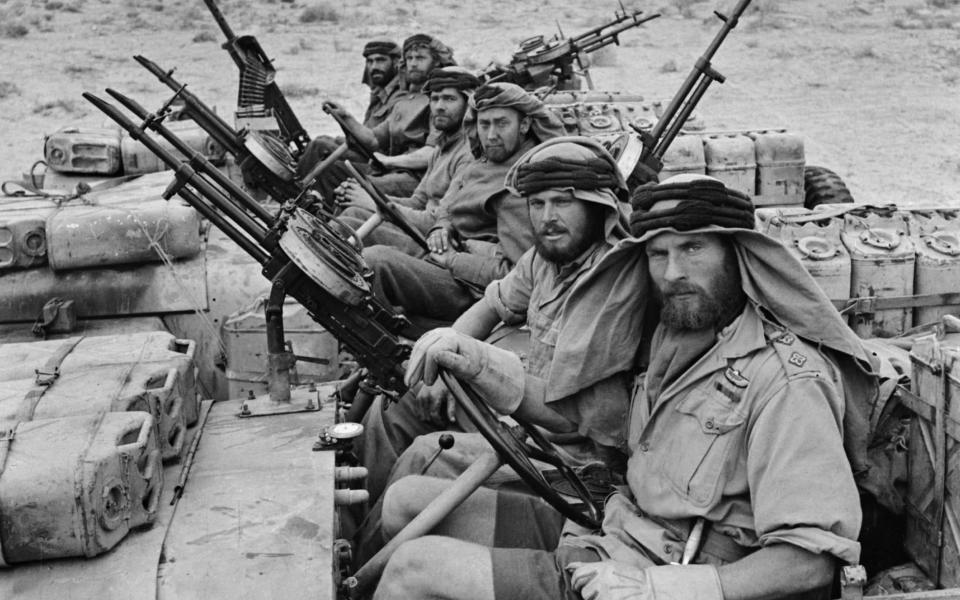
Certainly, the proposal was attractive: to raid and knock out the entire German fighting air force in North Africa, which was based on airfields across 70 miles of coastline. Historian Gavin Mortimer tells an alternative side to the story in The Phoney Major. Mortimer credits others for the initial SAS idea, including Colonel Robert Laycock and Stirling’s own brother, Bill.
Stirling was promoted to captain and tasked with setting up a camp of volunteer recruits. Among them were Jock Lewes, who created the Lewes bomb – easy-to-carry explosives that weighed just one pound each – and Paddy Mayne, who took command after Stirling was captured. The original name – L Detachment Special Air Service – came from a bogus “1st Special Air Service Brigade”, already invented by Colonel Dudley Clarke to fool the enemy. If L Detachment was discovered, that would reinforce the idea that detachments A-K were out there, ready to strike, too.
Though unorthodox, Stirling has been painted as a natural leader and willing to get his hands dirty – a man of unwavering, though modest, confidence and hare-brained derring-do. He didn’t like showing off, which he called “swanking” and ordered recruits to be decidedly “non-swank”. Gavin Mortimer, however, wrote in The Mail that Stirling would “command L Detachment in name only” and that psychologically, Paddy Mayne was the real leader. Stirling’s brother Bill, wrote Mortimer, “knew David did not have it in him to lead a guerrilla unit by example.” He added: “Bill Stirling was the intellectual force behind the SAS and Paddy Mayne the physical force. David Stirling was merely its salesman.”
The first mission came from a bet with an RAF captain, who said that Stirling’s men couldn’t sneak into an airfield near Kabrit. Stirling won £10. Stirling was once described as “a gentleman obsessed by the pleasures of chance”, an idea that neatly summed up his gambling – in and out of battle. The first real mission was Operation Squatter on the night of November 17 1941. Fifty-five men would parachute into the desert and attack five airfields, destroying as many aircraft as they could with Lewes bombs. With a hellacious desert storm approaching, there was talk of postponing the mission. For Stirling, who was fed up with all the postponements in the commandos, postponing the operation was simply not an option. He decided to press on.
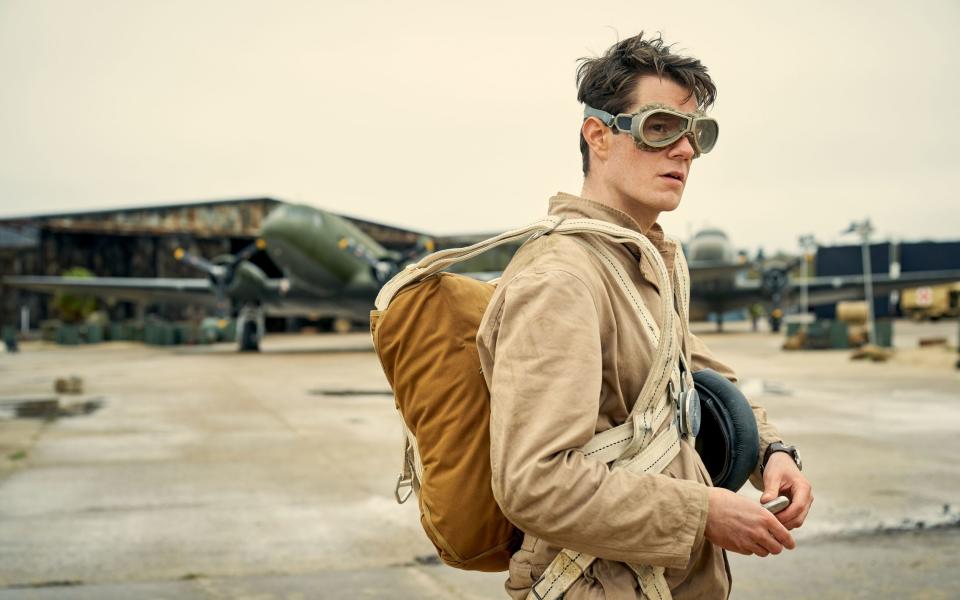
“A brave decision,” wrote Ben Macintyre, “but the wrong one.” The storm was punishing, and none of the five teams landed within ten miles of their intended drop zone; much of their equipment was lost. Men broke their neck or back; others were captured; some were never seen again. Of the 55 men who jumped, only 21 returned. Stirling, who was hurt in the jump, believed that dissenters at Middle East HQ were “chuffed that the unit had apparently been annihilated”. He avoided returning there in case they disbanded the SAS, after what Stirling admitted was “a complete failure”.
More successful was a series of raids on airfields on the Gulf of Sirte, going by truck instead of parachuting, the following month. At Tamet airfield, Paddy Mayne’s team destroyed aeroplanes and assassinated a party of Germans; at Agedabia, a handful of men destroyed 37 planes with Lewes bombs. Stirling’s own team, however, was unsuccessful. While scouting out their targeted airfield, Stirling trod on a sleeping Italian soldier and had to flee. Overall, L Detachment had destroyed more than 60 aircraft. Stirling's ambition was to score a “grand slam”: 50 planes in one night.
Jock Lewes was killed during further airfield attacks in December. It was a blow for Stirling. Lewes, said Stirling, had been “absolutely indispensable”. He later admitted fear in missions, but overcame it with his trademark swagger.
“One of the things I could be sure of was my own defeat of craven fear, which I had to a maximum degree,” he said in The Originals. “I’m not arrogant. But I think one of the reasons that the SAS concept has survived longer perhaps than might be expected is because of the fact that it was forged in hell, forged behind the lines and with the running battle with Middle East HQ. That forced me all the time to be a step ahead.”
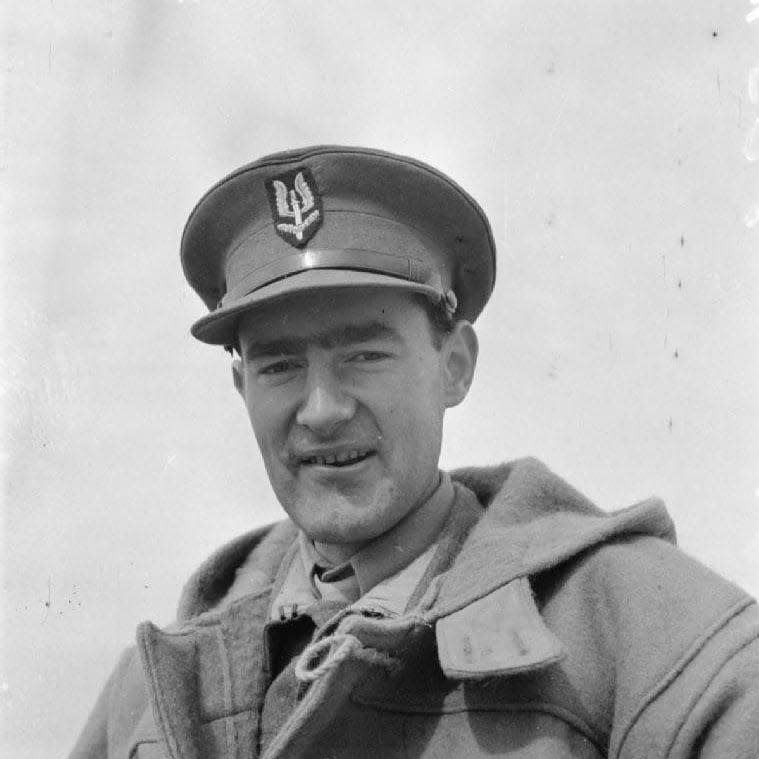
Stirling drove his own car on some missions, a Ford V-8 station wagon (painted olive grey like a German staff car), customised for desert travel and later fitted with Vickers anti-aircraft guns. Fitzroy Maclean said that Stirling’s driving was “the most dangerous thing in World War Two”. In May 1942, he drove the car straight into occupied Benghazi, in Libya, bold as brass, talking his way through an Italian checkpoint and outmanoeuvring German cars. A planned attack on the Benghazi harbour was a comical disaster, including two punctured dinghies, almost blowing up the Blitz Buggy themselves, and Italian soldiers who accidentally tagged along, believing they were part of a drill.
Among Stirling’s gang in Benghazi was Randolph Churchill, son of Winston Churchill. Randolph was tremendously excited by the mission. (Elsewhere, Stirling had put up a £10 wager for anyone who could think of a better SAS motto than “who dares wins”. Randolph said he would come up with one but didn’t. “But he had to come up with his ten quid,” said Stirling.) Days after the Benghazi farce, Stirling crashed the Blitz Buggy. Randolph emerged with crushed vertebrae. Also in the car was Arthur Merton, a war reporter for The Daily Telegraph, who was hitching a ride to Cairo. He was killed in the crash; according to Macintyre’s book, Stirling never spoke of it.
Stirling met resistance from Field Marshal Bernard Montgomery, who took over Middle East Command and Eighth Army in 1942. Stirling brazenly requested 150 of Monty’s best men (hence Monty's “quite mad” comment). He was denied. “The only consolation for Stirling was that he lunched in Montgomery’s personal mess and ran up a massive drinks bill on the teetotaller’s account,” wrote Gordon Stevens.
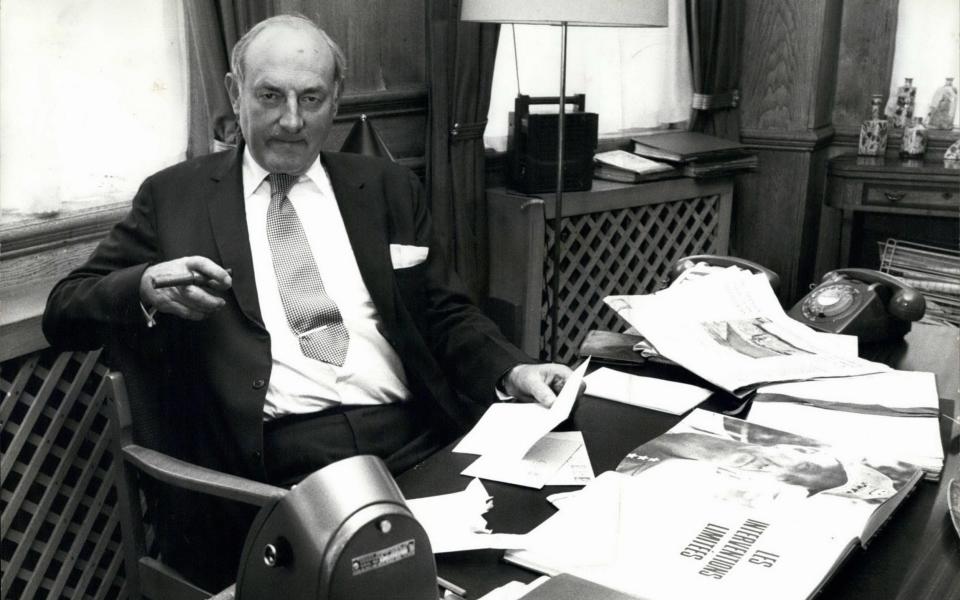
Stirling claimed to get support from Winston Churchill, however. Randolph had reported to his father, talking up the SAS – more bushy-bearded adventurers than army-issue soldiers. Stirling attended dinner with Churchill and earned the PM’s admiration. Churchill gave Stirling an autograph, which Stirling used to forge a paper that would give L Detachment access to whatever they needed. “It was a very useful piece of paper,” said Stirling. “But in a sense it was authentic, because Churchill was terribly pleased with the SAS. We used to chuck his son Randolph out of aircraft, which he thought was immensely good for him.”
Stirling was promoted to lieutenant-colonel and the SAS was expanded into a regiment. According to Gavin Mortimer, it was a move by top brass to keep better control of Stirling and his operations. “He might have been the Phantom Major to the British tabloids but to his soldiers, Stirling was a liability who had repeatedly gambled with their lives in his pursuit of glory,” wrote Mortimer.
Among the successful raids was an attack on Haneish airfield, on the Egyptian coast, in July 1942. Another attack, on Bagush airfield, didn’t go to plan when bombs failed to detonate. Stirling insisted they return immediately with jeep-mounted guns and destroyed the planes that way instead.
Stephen Knight, talking at a British Film Institute premiere of SAS Rogue Heroes, told a similar story: about how Stirling returned from a raid and told Paddy Mayne that he’d just blown up 20 planes, but Mayne didn’t believe him. “So they got in the jeep,” said Knight. “They drove back through the checkpoints, went back, counted the planes, got attacked by more planes, shot the other planes, came back and then escaped.”
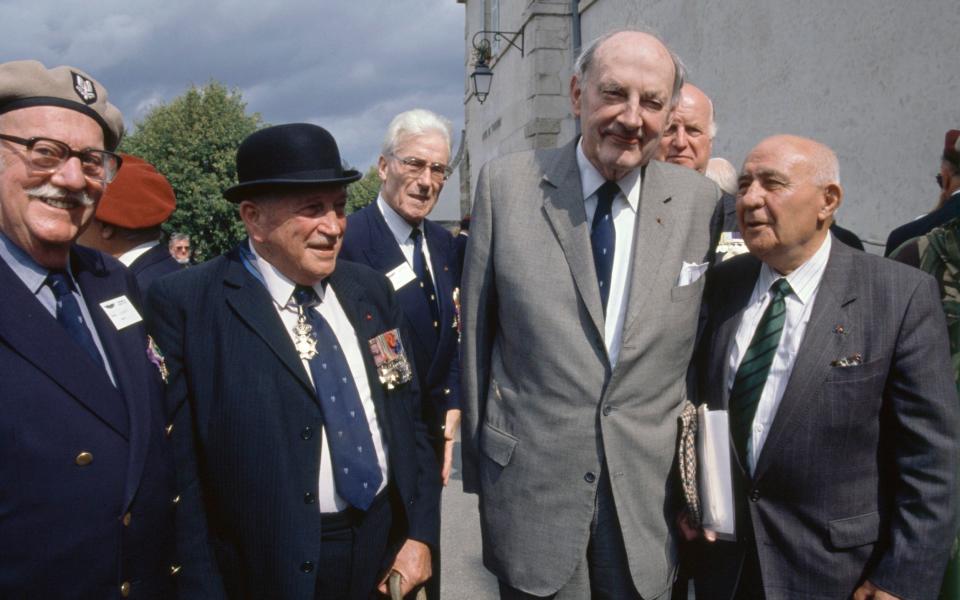
Knight also recounted a story about how Stirling cleared a room in a Paris bar, after being told he couldn’t use the pool table, by throwing in a hand grenade. Stirling employed a similar, impromptu tactic during an attack on Benina airfield in Libya. After planting bombs on German planes, engines, and equipment, Stirling spotted a guardhouse full of Germans. He opened the door, tossed in a grenade – apparently caught by a stunned Germans – and said, “Share this among you.” He told his biographer, Alan Hoe, that it was “a silly show of bravado” and “seemed close to murder”.
The adventures took their toll. Stirling was in rough physical shape – plagued by migraines and painful desert sores. He conceived a foolhardy plan in January 1943: to journey across the desert, passing right through the Germany army as it retreated into Tunisia, and be the first unit from the Eighth Army to link with the advancing First Army. He was captured on his way, however, by Luftwaffe paratrooper force. He escaped, scarpering after asking for a pee break, but was recaptured the next day. Held in Rome, he spilled sensitive SAS details to a fellow prisoner, the notorious traitor Theodore Schurch, who was working for the fascists. Stirling lied about his indiscretion, claiming he’d fed Schurch duff intel to deliberately deceive.
As a POW, Stirling escaped, or planned to escape, from a succession of camps. “Stirling was very good at escaping,” wrote Ben Macintyre. “But he was very bad at staying escaped.” Stirling was eventually transferred to Colditz. “A marvellous camp,” said Stirling.
After the war, Stirling moved to Rhodesia and set up the Capricorn Africa Society, a political group ostensibly focused on racial equality. It was a response to the rise in black nationalism across African nations, and he found support from white settlers.
Returning to Britain in the late 1950s, Stirling was alarmed by Egypt’s threat to British oil in the Middle East. He organised a private band of mercenaries to operate against Egyptian forces in Yemen – paid for by the Saudis. Later, Stirling was instrumental in helping sell arms to Saudi Arabia – selling fighter planes and British military knowhow – forging Britain's business relationship with the Saudis. He also set up an organisation called Watchguard, designed to provide African and Middle East leaders with British mercenaries. Gavin Mortimer described how after Paddy Mayne died in 1955, Stirling took the opportunity to boost his legend within the SAS.
In the 1970s, Stirling was more alarmed by domestic unrest and union strikes. He helped cause disruptions within the trade unions and formed a strange organisation, which included other ex-military men, called Great Britain 75. The idea was to take control of Britain if civil order collapsed and the lefties took over. Stirling later called the plan “ill-advised”; he was knighted shortly before he died in 1990.
Field Marshal Bernard Montgomery may have thought that Stirling was quite mad, but he also conceded “in war there is often a place for mad people”.

 Yahoo News
Yahoo News 
